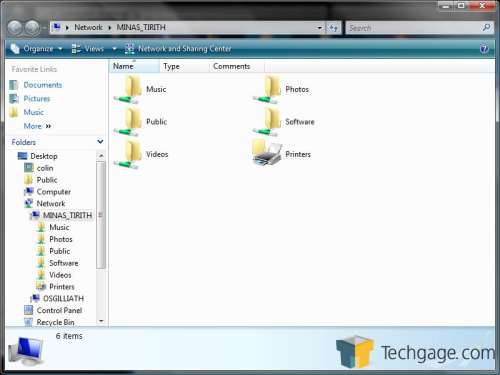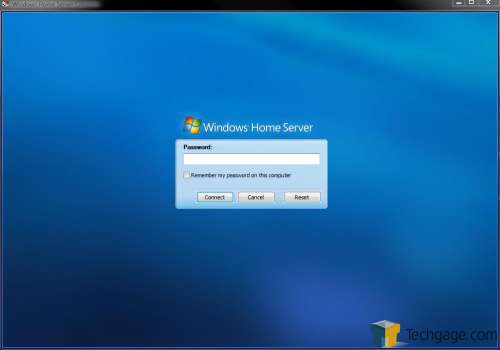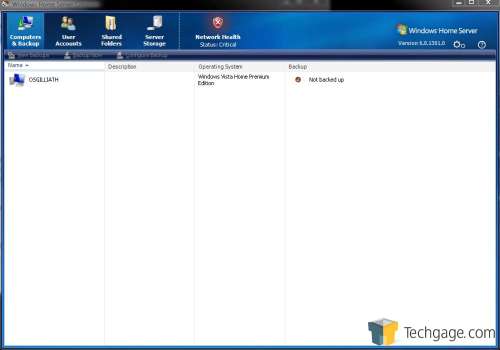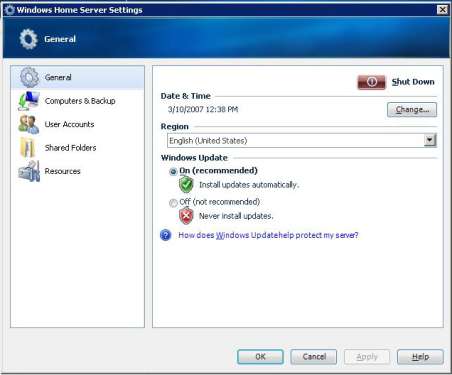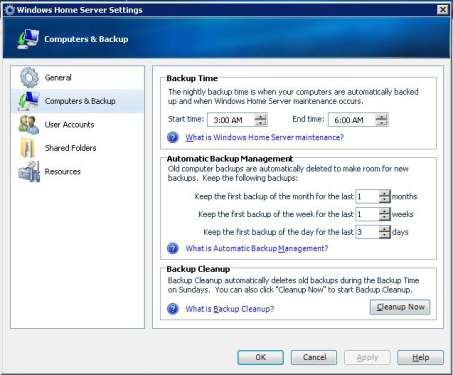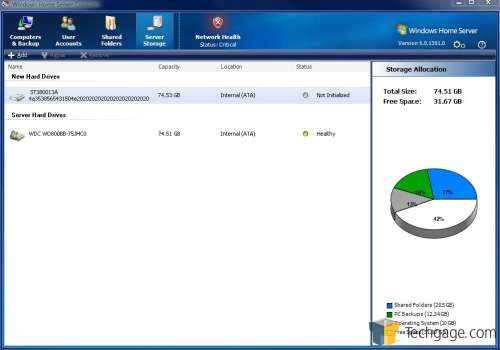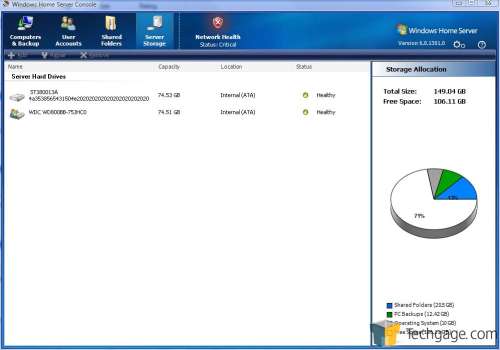- Qualcomm Launches Snapdragon 4 Gen 2 Mobile Platform
- AMD Launches Ryzen PRO 7000 Series Mobile & Desktop Platform
- Intel Launches Sleek Single-Slot Arc Pro A60 Workstation Graphics Card
- NVIDIA Announces Latest Ada Lovelace Additions: GeForce RTX 4060 Ti & RTX 4060
- Maxon Redshift With AMD Radeon GPU Rendering Support Now Available
Windows Home Server Preview
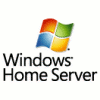
We have a look at the beta version of the Home Server software, which you’ll be able to purchase separately or as part of a Home Server bundle from PC makers like HP. With its combination of features and simplicity, this is one future home networking product that’s worth looking forward to.
Page 3 – Configuration
There is very little actual configuration to be done for WHS. It creates several default shares during the installation. Everything on the server side is done during the installation process. Remote Desktop Connection is enabled during the installation, so you can stick the thing in a closet or under a bed somewhere – after completing the setup process, you’ve done everything that requires physical access to the machine.
According to the documentation from Microsoft, the next step in the process is to install the WHS Connector software on a normal machine. As I said before, WHS is really designed to be a “headless†storage solution. Essentially, it’s a NAS Device with a brain. I proceeded to install the WHS Connector on my Windows Vista Home Premium machine with no complications.
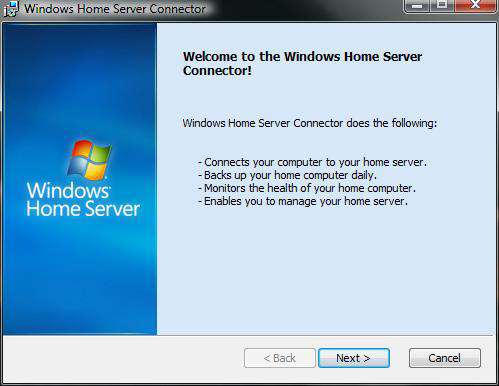
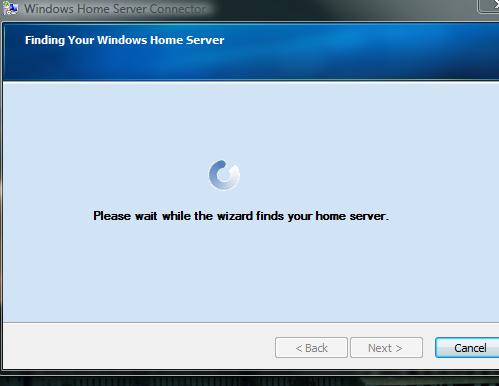
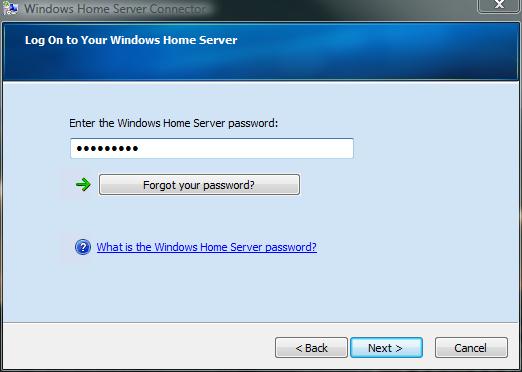
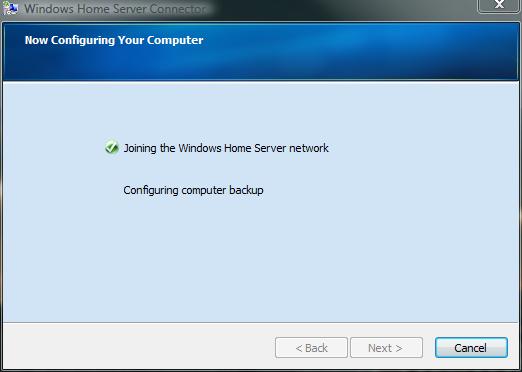
The WHS Connector is where all of the configuration and maintenance for WHS will be done. The Connector is identical to the Home Server Console that was available when sitting at the desktop on the server. The connector requires you to enter the Windows Home Server password, though they are a little unclear as to what this is. I just took a guess at it being the Administrator password determined during the server setup, and it turned out I was correct. After logging in I was presented with the Console screen.
From here I began configuring the server. In the upper right hand corner of the console I found the WHS Settings button. Here I was able to configure the region language, time zone, and Windows Update settings. The server can also be shutdown or restarted from here. I was also able to configure the General Backup settings for the automated backups, and change the WHS Password from the User Accounts Tab.
I decided the next thing to do was add a user. It was fairly straightforward. Click on User Accounts in WHS Connector, then click Add. In typical Windows style, I was presented with a wizard to step me through adding a user.
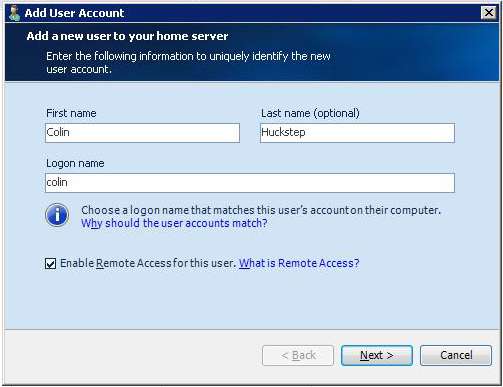
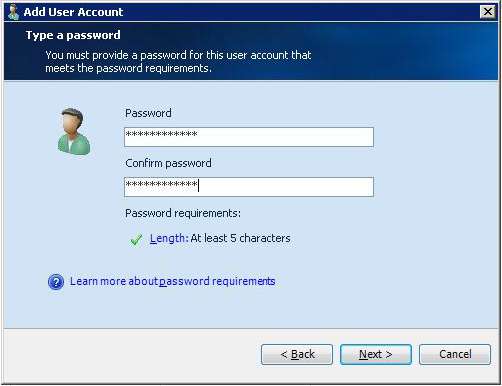
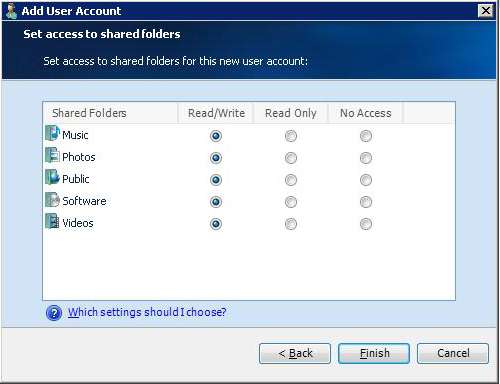
This process also creates a folder for the user in the “Users†shared folder on the server.
One feature of WHS is the ability to easily add media to the media pool on the server. To do this I just had to plug in another hard drive. This can be a USB, IDE, SATA, or SCSI hard drive. If it’s a hard drive, and it is still usable, it will probably work in WHS. I chose to add an additional 80GB internal hard drive. Once connected, the drive appears in the Server Storage tab on WHS.
Clicking the Add button will launch the Add a Hard Drive wizard. The wizard will format the hard Drive and add it to the media pool.
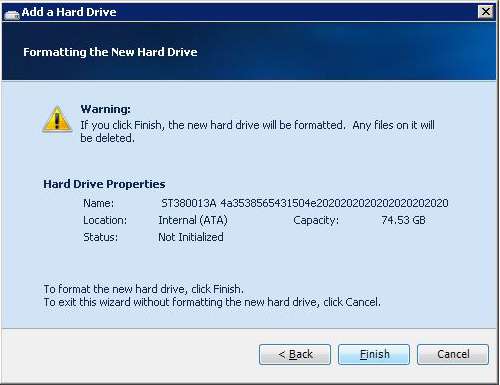
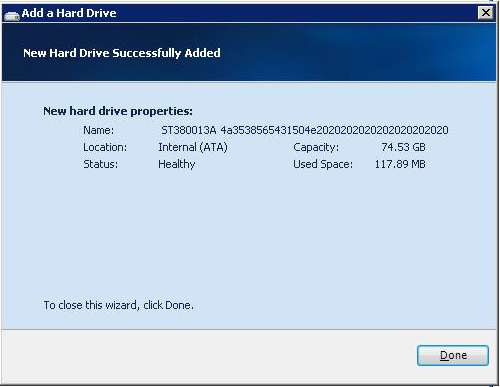
As you can see below, my Total Size has gone from 74GB to 149GB. Not a ton of storage, but plenty for storing most of the media that I have and some nightly backups from my computers. Once a second drive is installed, WHS allows for Share Duplication across drives. This option will make a copy of the shared folder on both drives for redundancy protection.
Depending on how much of your media pool is in use, removing a hard drive might be a bit trickier than installing a hard drive. If you do not have enough free space to compensate for the drive you are removing you will have to delete some files before removing the drive. The process is very similar to adding a hard drive; just click the Remove button.
Microsoft is making a valiant effort at getting home users to start doing regular backups of their files. Windows Home Server is designed to perform automated nightly backups of the computers on the home network. Configuring backups of an entire computer is quite simple. Right-click on a computer in WHS Connector and select configure backup. Again, I head off to wizard land, should I really expect different from Microsoft. At this point the program is really just designed to back up entire drives. There is the ability to exclude folders, but I got an error message stating the “Home PC is Unresponsive†every time I tried to exclude a folder.
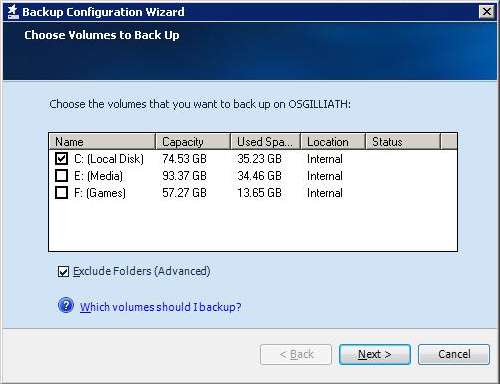
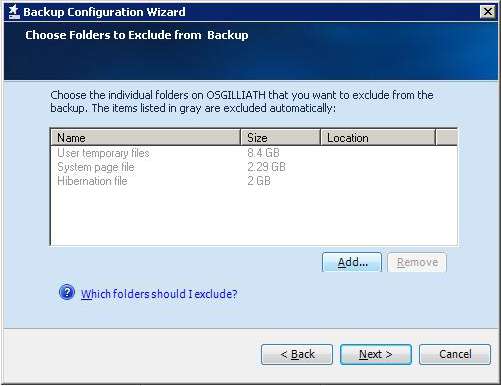
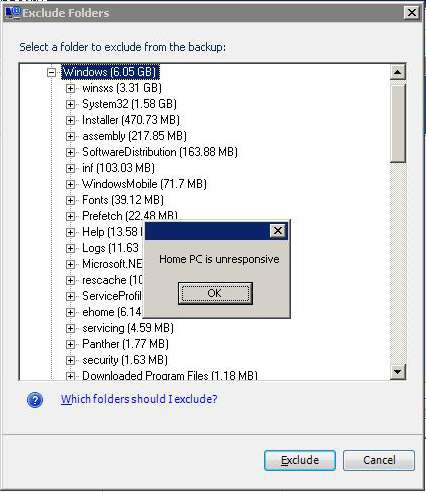
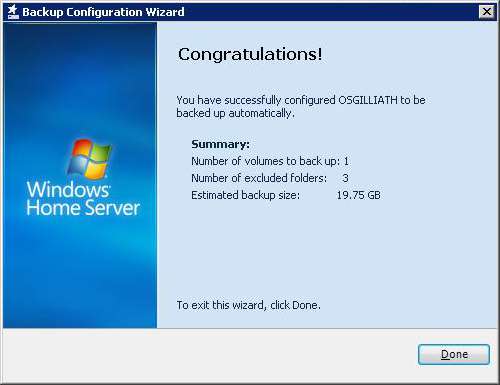
After having run the nightly backups for a week; it appears that the backups are incremental. So it only backs up a file if it is new, or it has changed. This is probably the best method for home users. Home Server is also smart enough to only keep one copy of a file. So if you have the same music library on two computers, WHS will only make one copy of the file. This can significantly reduce the amount of storage required for backups. WHS does automatic backup clean-up also. It allows you to set how many backups to keep on a monthly, weekly, and daily basis. I set mine to keep the first back up of every month, the first backup of every week, and backups for the last 3 days. If you’re not making a ton of file changes on the system every day then backup storage won’t get terribly large.
I hope to see them add some more functionality to this in future releases and the final RTM. I would like to see an “advanced†mode where I can select individual folders to backup. Looking at the Requests Forum for this product, several other beta testers have requested this as well.
|
|
Support our efforts! With ad revenue at an all-time low for written websites, we're relying more than ever on reader support to help us continue putting so much effort into this type of content. You can support us by becoming a Patron, or by using our Amazon shopping affiliate links listed through our articles. Thanks for your support!




